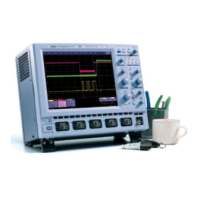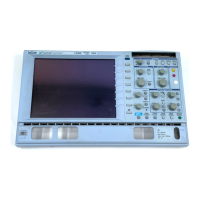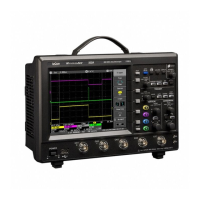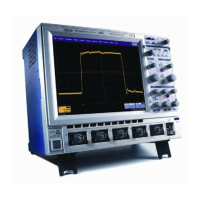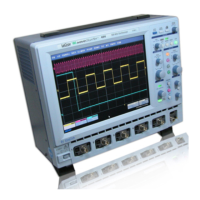X-Stream Operator’s Manual
WM-OM-E Rev I 411
Parameter
Settings
When you select acsn from the PRML dialog's With parameter field (DRIVE
ANALYSIS Æ Measure Æ Parameter Set Æ PRML) an acsn Pattern Length field
appears also.
The pattern length should be set as an integral number of waveform periods, and
must be at least 50 samples at the DDA’s sample rate. (The sample rate is shown
in the TimeBase label box.) Because these periods will be correlated with the
same number of following periods, the pattern length must be no more than half
the number of full periods available in the sweep.
Notes on How Settings Affect ACSN Measurement
Pattern length should be close enough to the signal period (or multiple thereof)
that it is on the correlation peak. The code measures correlation at 3 positions: the
length, 6 samples less and 6 samples more. It will walk up a slope until the center
sample is highest, tighten the spacing until the two side positions have correlation
above half the correlation at the center position, and eventually perform a
parabolic fit. But if pattern length misses the peak entirely then this search may not
work if the smallest of the three correlations is at the center and the two side
position correlations are equal, it stops. For a sinusoidal signal, almost any setting
of pattern length should work.
One limitation to know about at this stage: the code checks for a "reasonable"
peak. The correlation at the center position must be > 0.9, or the parameter
computation is canceled. This is done without the benefit of the parabolic fit, but
the intent is only to make sure of a reasonable peak.
The total number of cycles in the acquisition does not affect the ACSN result for a
stationary signal. Note that horizontal scale and the Max Sample Points entry on
the TIMEBASE "Smart Memory" dialog interact. As you increase the time of an
acquisition, the sample rate may decrease to keep the acquisition smaller than
Max Sample Points. Although ACSN is not affected by horizontal scale, it is
affected by sample rate. Be sure to keep it high enough.
For the same signal, ACSN will fall as vertical scale is increased, because the
signal fills less of the code space of the ADC and is therefore more contaminated
by quantization noise and any other internal noise. In general, when displayed on
a channel (or a reset trace), the signal should fill as much of the grid vertically as
possible, but should never clip against the top or bottom of the grid. If high ACSN
readings (greater than or equal to 30 dB) are expected, this is especially
important.
The pattern length should be kept to the minimum number of cycles that will
satisfy the 50 samples per pattern requirement. In general, with a somewhat noisy
signal, as the number of cycles in one pattern length is increased, ACSN is slightly
reduced. For example, with an 80 MHz 75 mV sine wave with 0.6% (of p-p) rms
noise, sampled at 1GS/s, acsn result varied with pattern length as follows:
